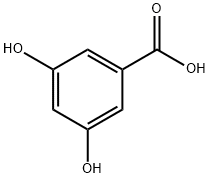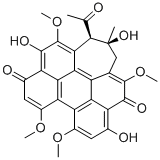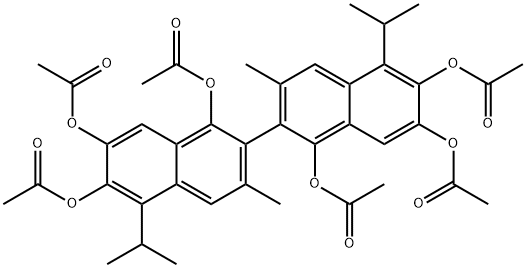2,3-Dihydroxynaphthalene
Synonym(s):2,3-Dihydroxynaphthalene;2,3-Naphthalenediol
- CAS NO.:92-44-4
- Empirical Formula: C10H8O2
- Molecular Weight: 160.17
- MDL number: MFCD00004073
- EINECS: 202-156-7
- SAFETY DATA SHEET (SDS)
- Update Date: 2025-12-17 09:50:35

What is 2,3-Dihydroxynaphthalene?
Chemical properties
Off white to redish white powder. 2,3-Naphthalenediol [92-44-4], mp 161℃, gives a dark blue color with iron(III) chloride; is aminated to 2- amino-3-naphthol at 140℃ and 2,3-naphthalenediamine at 240℃; and couples with diazotized anilines in the 1- or 1,4-positions.
The Uses of 2,3-Dihydroxynaphthalene
2,3-Dihydroxynaphthalene is used in making dyes, pigments, fluorescent whiteners, tanning agents, antioxidants, and antiseptics.
The Uses of 2,3-Dihydroxynaphthalene
2,3-Naphthalenediol is used in cosmetics asa component of oxidative hair dye. It is usedat a concentration of <0.1%.
The Uses of 2,3-Dihydroxynaphthalene
2,3-Dihydroxynaphthalene may be used in the following studies:
- Construction of dinaphtho[2,1-b;2′,3′-d]furan-6-ol, via dehydration reaction in the presence of strong acid.
- As fused ring catecholate type ligand for the surface modification of nanocrystalline TiO2 particles.
- As adsorptive and competing ligand during the chemical speciation of iron in seawater by cathodic stripping voltammetry.
- Synthesis of cyclotriphosphazene derivatives, used as non-halogen flame retardants
Definition
ChEBI: Naphthalene-2,3-diol is a naphthalenediol.
General Description
2,3-Dihydroxynaphthalene is a polyhydroxy phenol. It is an aromatic dihydroxy compound having hydroxyl groups at ortho positions. Its reaction with molybdenum(VI) complexes has been reported. The asymmetric oxidative coupling polymerization of 2,3-dihydroxynaphthalene using the Cu(I)-bisoxazoline complex as catalyst has been reported to afford poly(2,3-dihydroxy-1,4-naphthylene), having a continuous 1,1′-bi-2-naphthol main chain structure. The nitrodisplacement reaction between nitrophthalodinitriles and 2,3-dihydroxynaphthalene has been investigated.
Health Hazard
2,3-Naphthalenediol shows low toxicity andmild irritant actions on the skin and eyes. Theoral LD50 value for rats of a 5% solutionin propylene glycol may be on the orderof 675 mg/kg (calculated by the method ofWeil). The intravenous LD50 value for miceis 56 mg/kg. At 1% concentration, it causedslight eye irritation in female albino rabbitsand exhibited erythemal response in guineapigs. At the 0.1% level (concentration in hairdye), it had no reaction on human skin. Thiscompound was nonmutagenic in Salmonellatyphimurium strain tests.
There is very little information in the literatureon the toxicity of 2,3-naphthalenediol.Assessment by the CIR expert panel on thesafety of this compound as used in cosmeticshas been inconclusive (Cosmetic, Toiletryand Fragrance Association 1987b).
Synthesis
2,3-Dihydroxynaphthalene is prepared by caustic fusion of 3-hydroxynaphthalene-2,6-disulfonic acid followed by treatment with dilute sulfuric acid under pressure, or by acid desulfonation of 2,3-dihydroxynaphthalene-6-sulfonic acid.
Properties of 2,3-Dihydroxynaphthalene
| Melting point: | 161-165 °C (lit.)
162-164 °C |
| Boiling point: | 246.06°C (rough estimate) |
| Density | 1.0924 (rough estimate) |
| vapor pressure | 0.8 hPa (149 °C) |
| refractive index | 1.5178 (estimate) |
| Flash point: | 175 °C |
| storage temp. | Store below +30°C. |
| solubility | 4g/l |
| pka | 9.10±0.40(Predicted) |
| form | Powder |
| color | White to pinkish to beige-grayish |
| PH | 6 (1g/l, H2O, 20℃) |
| Water Solubility | slightly soluble |
| BRN | 742375 |
| CAS DataBase Reference | 92-44-4(CAS DataBase Reference) |
| NIST Chemistry Reference | 2,3-Naphthalenediol(92-44-4) |
| EPA Substance Registry System | 2,3-Naphthalenediol (92-44-4) |
Safety information for 2,3-Dihydroxynaphthalene
| Signal word | Danger |
| Pictogram(s) |
 Corrosion Corrosives GHS05  Exclamation Mark Irritant GHS07 |
| GHS Hazard Statements |
H302:Acute toxicity,oral H318:Serious eye damage/eye irritation |
| Precautionary Statement Codes |
P264:Wash hands thoroughly after handling. P264:Wash skin thouroughly after handling. P270:Do not eat, drink or smoke when using this product. P280:Wear protective gloves/protective clothing/eye protection/face protection. P301+P312:IF SWALLOWED: call a POISON CENTER or doctor/physician IF you feel unwell. P305+P351+P338:IF IN EYES: Rinse cautiously with water for several minutes. Remove contact lenses, if present and easy to do. Continuerinsing. P501:Dispose of contents/container to..… |
Computed Descriptors for 2,3-Dihydroxynaphthalene
2,3-Dihydroxynaphthalene manufacturer
JSK Chemicals
New Products
Indole Methyl Resin tert-butyl 9-methoxy-3-azaspiro[5.5]undecane-3-carboxylate Boc-His(Boc)-OH 2-CTC Resin 4-Chloro-7-tosy1-7Hpyrrolo[2,3-d]pyrimidine 5,7-Dibromo-1H-indole 2,5-dichloro-N-hydroxy-4,6-dimethylpyridine-3-carboximidamide 2,2-Dimethoxy-7-azaspiro[3.5]nonane hydrochloride 4-chloromethyl-5-methyl-1,3-dioxol-2-one (DMDO-Cl) R-2-BENZYLOXY PROPIONIC ACID 1,1’-CARBONYLDIIMIDAZOLE 1,1’-CARBONYLDI (1,2-4 TRIAZOLE) N-METHYL INDAZOLE-3-CARBOXYLIC ACID 4-((2-hydroxyethyl)thio)benzoic acid 1-(TERT-BUTOXYCARBONYL)-2-PYRROLIDINONE Methyl 6-methylnicotinate 3-Pyridineacrylic acid tert-Butyl carbazate TETRAHYDRO-2H-PYRAN-3-OL 2-((4-morpholinophenylamino) (methylthio) methylene) malononitrile 3-(4-morpholinophenylamino)-5-amino-1H-pyrazole-4-carbonitrile 2,4-dihydroxybenzaldehyde 1,3-Diethyl-1,3-Diphenylurea Methyl 2-methylquinoline-6-carboxylateRelated products of tetrahydrofuran








You may like
-
 92-44-4 2-3-Dihydroxy Naphthalene) 98%View Details
92-44-4 2-3-Dihydroxy Naphthalene) 98%View Details
92-44-4 -
 2,3-Naphthalenediol 99%View Details
2,3-Naphthalenediol 99%View Details -
 2,3-Naphthalenediol 92-44-4 98%View Details
2,3-Naphthalenediol 92-44-4 98%View Details
92-44-4 -
 2,3-Dihydroxynaphthalene, 98% 92-44-4 99%View Details
2,3-Dihydroxynaphthalene, 98% 92-44-4 99%View Details
92-44-4 -
 2,3-Dihydroxynaphthalene CAS 92-44-4View Details
2,3-Dihydroxynaphthalene CAS 92-44-4View Details
92-44-4 -
 2,3-Dihydroxynaphthalene, ≥98% (HPLC) CAS 92-44-4View Details
2,3-Dihydroxynaphthalene, ≥98% (HPLC) CAS 92-44-4View Details
92-44-4 -
 2,3-Dihydroxynaphthalene CAS 92-44-4View Details
2,3-Dihydroxynaphthalene CAS 92-44-4View Details
92-44-4 -
 2,3-Naphthalenediol CAS 92-44-4View Details
2,3-Naphthalenediol CAS 92-44-4View Details
92-44-4
